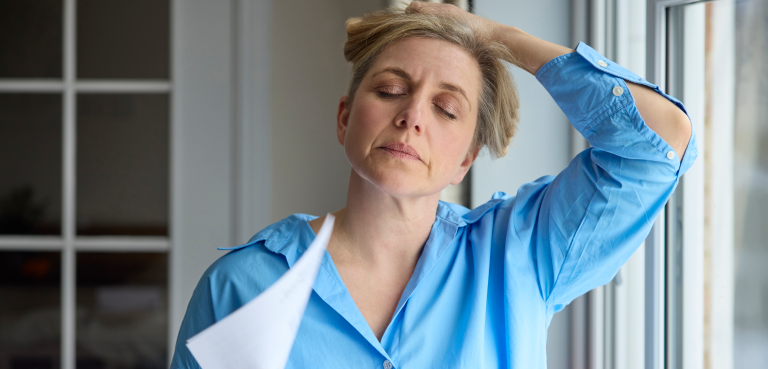Perimenopause vs. menopause — what is the difference? It’s easy to confuse the two conditions because the same thing causes them — your body’s decreased production of estrogen and progesterone due to the depletion of eggs in the ovaries — and many of the symptoms are identical. Symptoms such as hot flashes and night sweats are commonly reported.
What is the difference between perimenopause and menopause?
During perimenopause, also known as transitional menopause, your body’s levels of estrogen and progesterone begin to fluctuate. You still have a menstrual cycle up until the last year of perimenopause, but your periods may be shorter, longer or irregular during this time. You may also begin to experience other symptoms associated with perimenopause and menopause.
During perimenopause, your ovaries will eventually stop releasing eggs, and producing estrogen and progesterone; and you will no longer have periods. Once you are period-free for 12 months, you have reached menopause.
Post-menopause, vaginal dryness, pain during sex and urinary issues, such as painful urination or having to go more frequently or more urgently, are common complaints.
One very important difference between perimenopausal symptoms and menopausal symptoms is vaginal bleeding. It’s normal during perimenopause, but it’s not typical after you reach menopause. Postmenopausal vaginal bleeding may be a sign of endometrial or uterine cancer. If you have postmenopausal vaginal bleeding, see a doctor without delay for a diagnosis.
What are five common symptoms of perimenopause?
Some of the most common symptoms in perimenopause include:
- Hot flashes and night sweats.
- Insomnia.
- Moodiness.
- Reduced fertility and sex drive.
- Vaginal dryness.
“If you are experiencing symptoms or have questions the physicians at St. Elizabeth Women’s Health would be happy to provide assistance and care for you,” says Dr. Abby Loftus-Smith.
What causes hot flashes and night sweats, and how do they feel?
A hot flash is the sudden sensation of your chest, neck and face feeling flushed and overheated. Hot flash intensity varies greatly, but extreme hot flashes can feel almost like having a heater pointed at your face.
Hot flashes can result from specific drug therapies or some diseases, including hypothyroidism, infection or cancer; however, the primary causes are perimenopause and menopause. In perimenopause and menopause, hot flashes are triggered in the hypothalamus, the body-temperature control center in the brain, which is affected by reduced estrogen levels.
During a hot flash, blood vessels in your skin contract, causing skin temperature to increase by as much as 7 degrees while your core body temperature remains normal. This temperature increase can cause the skin to redden. The blood vessels react to the overheating by quickly expanding to release heat. This process cools down your skin, which can make you sweat a little or a lot. When this heating and cooling process repeatedly occurs during sleep and is punctuated by heavy sweating, it’s referred to as night sweats.
If you experience extreme perimenopause or menopause symptoms, talk with a gynecologist about ways to alleviate the problem, which might include prescription medications.
What is the average age to start perimenopause and menopause?
For most American women, perimenopause begins in their 40s, although it can start earlier. Perimenopause can begin up to 10 years before menopause, which occurs at an average age of 51 in the U.S.
About 5% of women reach menopause between the ages of 40–44, which is known as early menopause. A considerably lower number of women, about 1%, experience menopause before age 40, which is called premature menopause. Induced menopause, which can be premature, early or in the normal range for menopause, describes when surgical or medical treatment interrupts ovarian function, forcing the body into sudden menopause.
Many women benefit from seeing a gynecologist or urogynecologist about perimenopause and menopause symptoms. Find a doctor who can help answer your questions and provide guidance for symptom relief.

